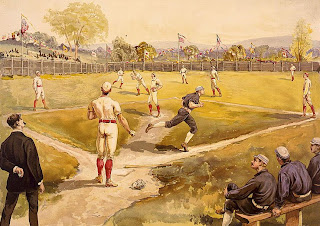 Baseball Payrolls 2009 & 2010
Baseball Payrolls 2009 & 2010
| |
| |
Team |
2009 |
2010 |
Average |
| Yankees |
$201,449,189 |
$206,333,389 |
$8,253,336 |
| Red Sox |
$121,745,999 |
$162,747,333 |
$5,611,977 |
| Cubs |
$134,809,000 |
$146,859,000 |
$5,439,222 |
| Phillies |
$113,004,046 |
$141,927,381 |
$5,068,835 |
| Mets |
$149,373,987 |
$132,701,445 |
$5,103,902 |
| Tigers |
$115,085,145 |
$122,864,929 |
$4,550,553 |
| White Sox |
$96,068,500 |
$108,273,197 |
$4,164,354 |
| Angels |
$113,709,000 |
$105,013,667 |
$3,621,161 |
| Mariners |
$98,904,166 |
$98,376,667 |
$3,513,452 |
| Giants |
$82,616,450 |
$97,828,833 |
$3,493,887 |
| Twins |
$65,299,266 |
$97,559,167 |
$3,484,256 |
| Dodgers |
$100,414,592 |
$94.945,517 |
$3,651,751 |
| Cardinals |
$77,605,109 |
$93,540,753 |
$3,741,630 |
| Astros |
$102,996,414 |
$92,355,500 |
$3,298,411 |
| Braves |
$96,726,166 |
$84,423,667 |
$3,126,802 |
| Rockies |
$75,201,000 |
$84,227,000 |
$2,904,379 |
| Orioles |
$67,101,666 |
$81,612,500 |
$3,138,942 |
| Brewers |
$80,182,502 |
$81,108,279 |
$2,796,837 |
| Reds |
$73,558,500 |
$72,386,544 |
$2,784,098 |
| Royals |
$70,519,333 |
$72,267,710 |
$2,491,990 |
| Rays |
$63,313,034 |
$71,923,471 |
$2,663,832 |
| Blue Jays |
$80,538,300 |
$62,689,357 |
$2,089,645 |
| Nationals |
$60,328,000 |
$61,425,000 |
$2,047,500 |
| Indians |
$81,579,166 |
$61,203,967 |
$2,110,482 |
| Diamondbacks |
$73,516,666 |
$60,718,167 |
$2,335,314 |
| Marlins |
$36,834,000 |
$55,641,500 |
$2,060,796 |
| Rangers |
$68,178,798 |
$55,250,545 |
$1,905,191 |
| Athletics |
$62,310,000 |
$51,654,900 |
$1,666,287 |
| Padres |
$43,734,200 |
$37,799,300 |
$1,453,819 |
| Pirates |
$48,693,000 |
$34,943,000 |
$1,294,185 |
Note: You can access individual player salaries by clicking the individual’s team.
The above figures represent salaries for the regular season. The “Average” column indicates average individual salaries. Once a team makes it to the post season, there’s an entirely new payout structure for the players on those rosters. I read an interesting article the other day about what players earn for winning the World Series. I always thought it was a set amount but instead there’s actually a players’ pool derived from 60% of the gross gate receipts from each of the first four playoff games in each division. It’s based on a payout schedule, distributed as follows:
- World Series Winning Team 36%
- World Series Losing Team 24%
- League Championship Series Losers 12% each
- Division Series Losers 3% each
- Non-Wild Card Second Place Teams 1% each
 Last year the Philadelphia Phillies players were each paid $351,504 for winning the World Series and the losers, the Tampa Bay Rays, each received $223,390. (It kinda makes me wonder why the Texas Rangers were looking so sad at the end of Game 5 this year!) Whew! That’s a lot of “bonus” folks. Back in 1905, the winners share of the total pool, based on gate receipts of 91,723 in attendance, was $1,142 to the winners and $832 to the losers.
Last year the Philadelphia Phillies players were each paid $351,504 for winning the World Series and the losers, the Tampa Bay Rays, each received $223,390. (It kinda makes me wonder why the Texas Rangers were looking so sad at the end of Game 5 this year!) Whew! That’s a lot of “bonus” folks. Back in 1905, the winners share of the total pool, based on gate receipts of 91,723 in attendance, was $1,142 to the winners and $832 to the losers.
“When we played, World Series checks meant something. Now all they do is screw up your taxes.” Don Drysdale, 1978 .
Granted, that was back in 1978 when the tax rate structure was 70%. Now it’s only 35% but still……35% of $351,504 is still over $123,000, and that’s a lot of taxes for anyone! But, I know, it’s still kinda hard to feel sorry for them.

NY Yankees 2009 World Series Ring
Everyone on both teams in the World Series also gets a World Series ring valued somewhere around $40,000, and in addition to all the above, the MVP (Edgar Renteria this year) gets a car and a trip to Walt Disney World, again, all subject to income taxes, I’m sure.
Here’s a few interesting tidbits from one of my favorite sources, Baseball Almanac ~
- Through the 2009 Fall Classic, there have been 105 World Series Classics, with 612 Series games played in front of 27,407,011 fans.
- During the World War II years, players in the World Series received a percentage of their shares in War Bonds.
- The Wildcard Team doesn’t receive a share unless they move up to the next playoff round.
It’s not supposed to be about the money. They’re supposed to be playing for love of the game, but how can the money not be a huge factor? Of course it is. We learned that back in 1994-1995 when the Players went out on  a strike that literally shut down half the baseball season that year and we ended up with no World Series. Of course, the reason we were told was not about the money, but about playing conditions, contract clauses, etc. But, rest assured, it was about the money. Players now have managers to look out for their best interests, and who can blame them? We all grew up really fast in the 90’s and baseball has never really been quite the same. I mean, who’s to say it won’t happen again? Well, all I can say is I’m already going into withdrawals with no baseball games to watch…..December, January, February, March and then like magic, it’s April! And we get to start all over again! And we’ll keep paying those high ticket prices to the games that continue to fund these high priced baseball players and the teams with those enormous payrolls. Well, what can I say? This is baseball, America’s favorite pasttime, and it’s here to stay folks. Thank you God!
a strike that literally shut down half the baseball season that year and we ended up with no World Series. Of course, the reason we were told was not about the money, but about playing conditions, contract clauses, etc. But, rest assured, it was about the money. Players now have managers to look out for their best interests, and who can blame them? We all grew up really fast in the 90’s and baseball has never really been quite the same. I mean, who’s to say it won’t happen again? Well, all I can say is I’m already going into withdrawals with no baseball games to watch…..December, January, February, March and then like magic, it’s April! And we get to start all over again! And we’ll keep paying those high ticket prices to the games that continue to fund these high priced baseball players and the teams with those enormous payrolls. Well, what can I say? This is baseball, America’s favorite pasttime, and it’s here to stay folks. Thank you God!

 From The Baseball Docent: I love hearing why people love baseball. We all love the sport for different reasons; however, a common theme among many who love the game is that the sport some how connects them to their families in some way; usually their dad. Here’s one of those stories:
From The Baseball Docent: I love hearing why people love baseball. We all love the sport for different reasons; however, a common theme among many who love the game is that the sport some how connects them to their families in some way; usually their dad. Here’s one of those stories:

















